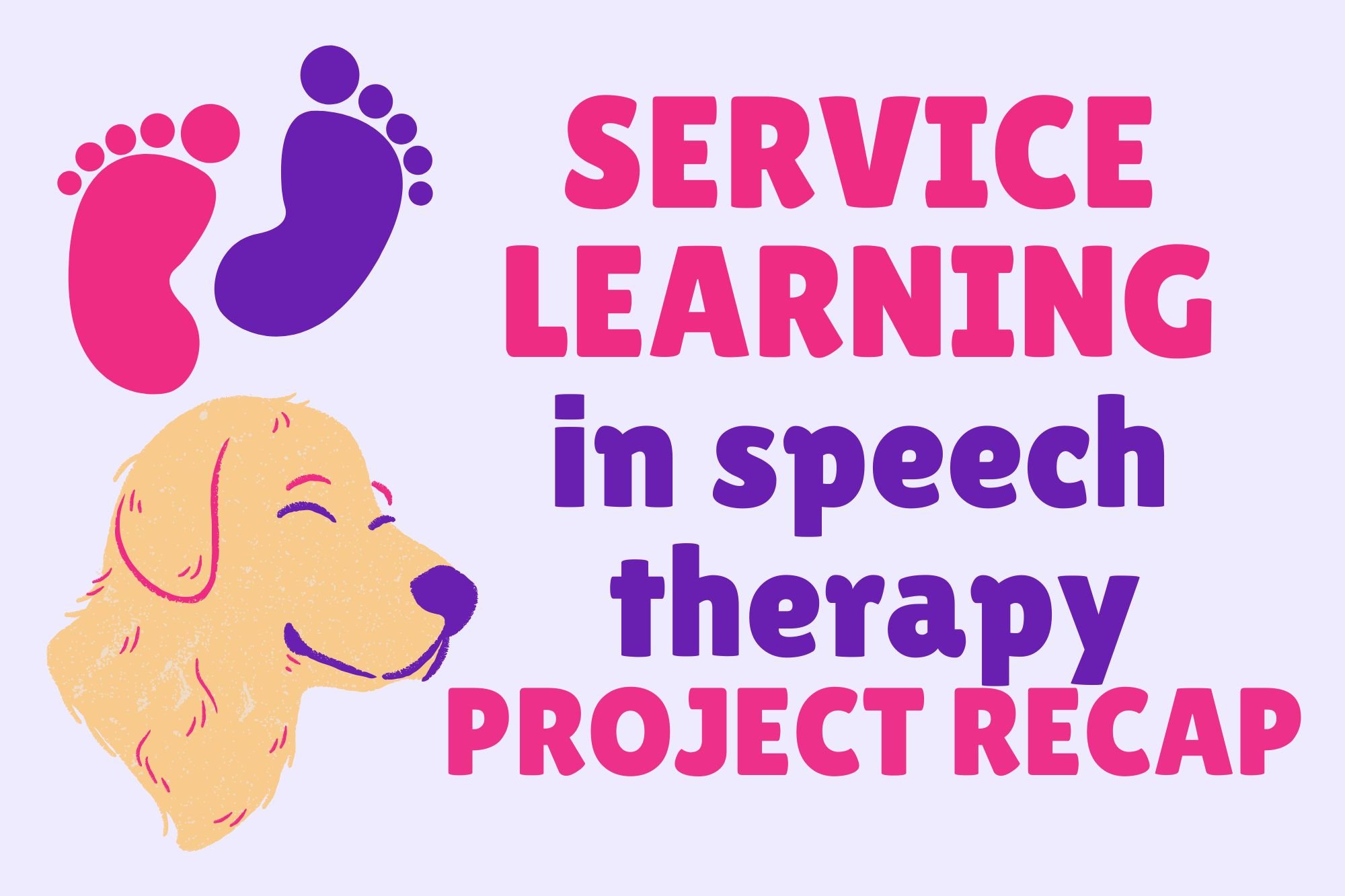Service Learning In Speech Therapy - Project Recap #2
If you’re interested in service learning in speech therapy and haven’t read my introduction article, check it out here. It tells you everything you need to know about service learning and how to implement it into your speech room this year!
For an in-depth look at a similar, non-Covid project, be sure to check out my Project Recap #1.
Our Second Service Learning Project - Babies and Animals
Oh, 2020, the year of COVID. Our service learning project usually starts in February/March and runs through the end of the year, so I’m sure you can imagine just how derailed this project became. Nonetheless, we got creative and had some great results!
Students/Teachers Involved For this project, I split my high school students into 9-10th grades and 11-12th grades and once again worked with the Resource Room English teacher. Because every school, district, and state have different “labels” for students, let me elaborate a bit further about the students we selected. The students for this project have learning disabilities that make learning in a general education classroom difficult. However, they can participate in the general education curriculum when it is taught in a smaller class and with a slower pace. About 75% of the students have speech therapy as a related service. We did most of the activities during my weekly push-in to their English class and via Google Meet. We targeted many of their ELA Extended Standards and their speech goals throughout the project.
Choose a topic Since many of the students had participated in the sock drive service learning project the year before, I gave a more formal overview of service learning and outlined different ways that our project could help people:
Direct Service
Indirect Service
Advocacy
I gave examples of each type of project and asked the students to independently think of a project they’d like to complete. Everyone completed a short worksheet.
Everyone in the class shared their project ideas, and we used a Google Form to vote on the project that we would complete.
The 9-10th graders chose Stray Animals and the 11-12th grade students chose NICUs.
Learn! We tried to involve the students in the research process as much as possible…until COVID hit, then we did our best!
Visualize - To get the students excited about the project, we made a poster that represented out topic. We asked the animal shelter students to choose a picture of a animals and the NICU class to find a picture of a baby. We printed and cut out the pictures and put them on a poster with a word that represented our topic.
Research - I came up with a few questions about each topic (animal shelters for 9-10 and NICU for 11-12). I wrote each question on a slide and shared the presentation with the students. We assigned each student a slide. The students researched their question and added their answer to their slide. We also asked each student to add a picture to their slide.
YouTube - Each class watched a few relevant YouTube videos. After each video, we held a class discussion about what we noticed and how we felt while watching.
NewsELA - I was able to find a relevant NewsELA article for each topic to further our knowledge about each topic.
Learn from an expert - This was a hard part due to COVID. Because we had difficulty getting all of the kids to log on at the same time, I conducted Google Meet interviews and recorded them. I reached out to my social network and was able to find a NICU nurse through a friend of a friend and the president of a rescue group. We shared the interviews with the students and asked them to watch them as an assignment.
Reflect and empathize This is where things got tough. Because we were remote, we didn’t get a lot of quality time to work together. We asked the students to write reflection paragraphs related to their topics. We provided step-by-step instructions since we were unable to meet in person.
Make a Plan and Nuts and Bolts This was also difficult because of remote learning. My co-teacher and I had to do a lot of the planning, but we ended up with some great results.
Stray Animals: The shelter gave us photos of adoptable animals. Our students made social media posts about the animals in hopes of getting them adopted. The teachers and I shared the photos of the dogs and linked to the shelter’s website and Amazon wish list. They received many donations from the wish list and were very grateful for the publicity!
NICU babies: We learned that the NICU really needed swings, so we made an Amazon list where people could buy a swing or donate to a swing. The students made Google Slides asking for donations that we emailed to the faculty at our school. We ended up raising enough money to have 3 swings donated to our local hospital’s NICU! I’d add a photo, but we used photos of one of our own students in the Slide!
Looking back Despite the challenges COVID sent our way, we ended up doing a lot of good during a really hard time for all of us. We may have done a few things differently if COVID wasn’t an issue, but overall, our project helped many furry and human members of our community!!
Ready to get started? I hope you’re inspired to complete a service learning project after reading this. Don’t forget to check out my full breakdown about service learning. I also learned a lot of what I know from an organization that our district partners with called Partnerships for Authentic Learning and Leadership. They have a much more detailed framework for service and project based learning. Your district may have a similar partnership, or check out their amazing programming. You can also leave a comment or email me kelly@highschoolslp.com!






